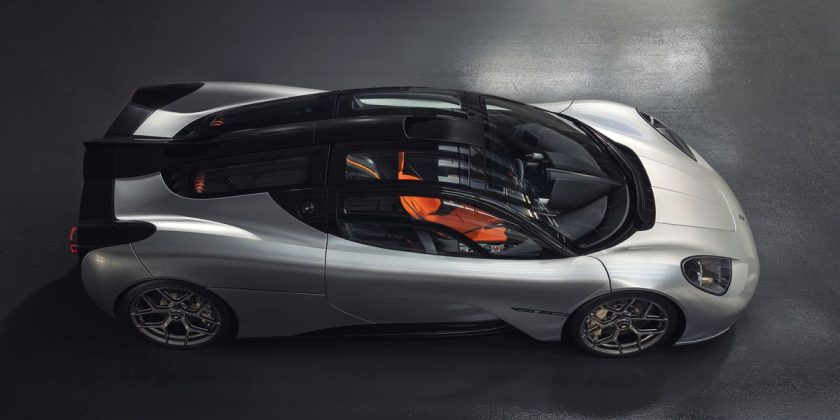
Gordon Murray isn’t awfully keen on modern supercars. He thinks they’re too heavy, too reliant on electronics, and simply aren’t engaging enough. Rather than sit on the sidelines any more, though, he’s decided to do what arguably no one else has managed – make something that improves upon his legendary McLaren F1.
The Gordon Murray Automotive T.50 may have nothing to do with McLaren in its modern road car-making form, but make no mistake, this is effectively the second-generation version of it. Its carbon fibre body even looks a little like the original, with cleans and very deliberate avoidance of “unsightly vents, ducts, or flaps”.

Instead, the T.50 relies on the ground effect, with under-body aerodynamics aided by a 400mm diameter fan at the back of the car. It’s inspired by Murray’s infamous Brabham BT46B ‘Fan Car’ and a system that used two small fans in the F1. The setup is much more complex here, though. It’s powered by a 48-volt subsystem and has six modes – Auto, High downforce, Streamline, Braking, Test and V-Max Boost.
The T.50 is a compact thing, with similar dimensions to a Porsche Cayman. It’s far lighter than one of those and considerably less bulky than even the lithest of supercars, though, tipping the scales at 986kg. Along with the obvious stuff like the carbon monocoque – which weighs a total of 150kg including the body panels – the weight-saving obsession when right down to things like the choice of bolts and the use of thinner glass for the windscreen.

In the T.50’s small body lies a 3.9-litre Cosworth-built, naturally-aspirated V12, which is a semi-stressed member of the chassis. It’s good for 654bhp at 11,500rpm, topping out at an unprecedented 12,100rpm. More than enough power for something so light, but for brief periods, the 48-volt starter-generator can briefly raise that figure to 690.
No performance figures have been given at this stage, and Murray insists there were no specific acceleration, top speed or power figures targeted by the project. Instead, the T.50 is supposed to be about driver engagement first and foremost, which is why that V12 isn’t hooked up to some fancy twin-clutch gearbox. Nope – this using a six-speed H-pattern manual developed by Xtrac.

The T.50 dials back the power assistance for the steering, which only comes into play at low speeds. On suspension duties meanwhile, we have forged aluminium double wishbones front and rear, working with inboard-mounted pushrod dampers. Rather than using some super-exotic, highly bespoke rubber, the T.50 opts for off-the-shelf Michelin Pilot Sport 4 S tyres measuring 235/35/19 at the front and 295/30/20 at the rear.
As if the McLaren F1 echoes weren’t already strong enough, the T.50 has dihedral doors, the lifting of which reveals a three-seater cabin just like the original. The occupants sit in a fighter jet-style glass canopy, with the driver facing a physical rev counter flanked by display screens. Just underneath, you might spot the pedals, which are each milled from a solid block of aluminium and laser etched with the car’s name. The stop/start button is under something brilliantly referred to as a “‘missile switch’ cover”.

If all that sounds jolly expensive, that’s because the GMA T.50 is. You’re looking at £2.36 million. Plus taxes. Considering there won’t be a car like this ever again, though, we can’t imagine Murray’s new outfit having much trouble shifting all 100 examples.
Source: Read Full Article
